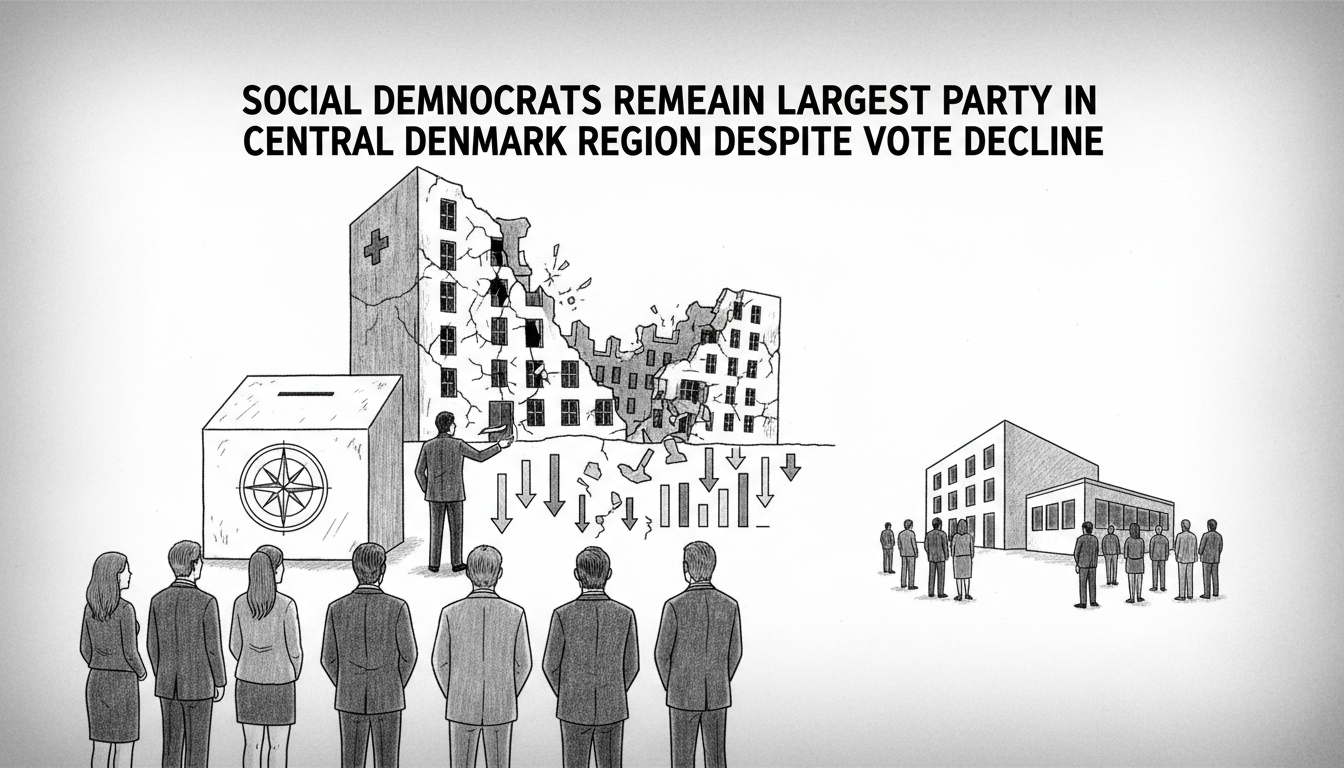The Social Democrats led by Anders Kühnau have maintained their position as the largest party in Central Denmark Region despite losing significant voter support. The party secured 23.9 percent of votes in the regional election.
This represents a decline of 5.4 percentage points compared to the previous regional election. The Liberal Party also experienced a substantial drop in support, falling to 19.1 percent of votes, a decrease of 5.6 percentage points.
Despite these losses, the vote share changes appear unlikely to affect the distribution of seats between the established parties. Anders Kühnau will seek re-election as regional council chairman, a position he has held since 2018.
The Liberal Party has nominated Anders G. Christensen as their candidate for regional council chairman. Christensen previously served as mayor of Favrskov Municipality.
Several parties gained ground in the region, including the Socialist People's Party, the Conservatives, Liberal Alliance, Danish People's Party, and the Alternative. The Denmark Democrats, participating in their first regional election, captured 7.9 percent of votes, securing two seats on the regional council.
The election period following the previous regional vote has been marked by several healthcare scandals that likely influenced voter sentiment. A supervision report last year revealed serious patient safety issues within the regional psychiatry department in Randers.
The so-called leg amputation case also dominated the political landscape, where patients died due to delayed treatment. Investigations suggested many patients could have avoided amputations with proper medical care.
Additional revelations emerged about questionable practices at the gastrointestinal surgery department of Aarhus University Hospital. These healthcare failures created substantial political pressure on the incumbent administration.
In the previous regional election, Anders Kühnau's personal vote count dropped dramatically from 62,959 to 47,116 votes. The distribution of personal votes in the current election remains unclear as vote counting continues.
The regional council has been reduced from 41 to 31 members for this election, potentially affecting political dynamics and coalition building. This structural change adds another layer of complexity to government formation negotiations.
Regional elections in Denmark determine who oversees healthcare delivery, regional development, and public transportation. The Central Denmark Region serves approximately 1.3 million residents across 19 municipalities.
The election results suggest voters are expressing dissatisfaction with healthcare management while maintaining some confidence in established political leadership. The coming weeks will reveal whether the Social Democrats can form a stable coalition despite their electoral losses.
Political analysts note that regional elections often serve as midterm referendums on national government performance. The declining support for both major parties indicates broader political shifts occurring across Denmark.

